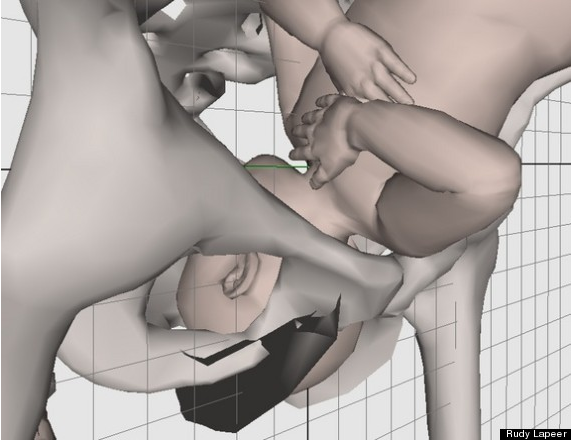New technology, presented last month at a conference on E-Health and Bioengineering, is being developed to simulate what goes on inside a woman’s body during childbirth.
 Currently, there are no accurate ways to know exactly what is going on inside the womb as a baby prepares for birth. Because the events of birth are hidden, there is often no way to tell whether, for example, a child will be too large to safely deliver vaginally. To prevent complications, the simulator can reveal the size of the baby and its movements – along with the internal muscle movements of its mother – to provide valuable knowledge of individual birthing scenarios to the physician and staff.
Currently, there are no accurate ways to know exactly what is going on inside the womb as a baby prepares for birth. Because the events of birth are hidden, there is often no way to tell whether, for example, a child will be too large to safely deliver vaginally. To prevent complications, the simulator can reveal the size of the baby and its movements – along with the internal muscle movements of its mother – to provide valuable knowledge of individual birthing scenarios to the physician and staff.
Currently, the computer program being developed to simulate birth can adapt to three of the seven typical movements that a baby makes in preparation for birth. The simulator can also adapt to specific women and their anatomy, allowing them to adjust their plan of action to the scenario playing out with her body specifically. The scenarios can also be compared to her previous birth experiences to help predict possible outcomes of the delivery process.
 Although the complete imaging technology, for use during labor and delivery, may not be fully developed for another decade or so, the research and prototypical model presented by Rudy Lapeer at last month’s conference are certainly a beginning.
Although the complete imaging technology, for use during labor and delivery, may not be fully developed for another decade or so, the research and prototypical model presented by Rudy Lapeer at last month’s conference are certainly a beginning.
Many abortion activists claim maternal health as a motive behind their work. They tout abortion as safer than childbirth, and promote pregnancy prevention and termination in lower-tier countries, like Africa, where maternal health could be placed at risk by natural childbirth. These abortion advocates typically deny or fail to mention that the dangers associated with many forms of contraception and all forms of abortion frequently outweigh those of natural childbirth.
CLICK LIKE IF YOU’RE PRO-LIFE!
If their motive is to preserve maternal health, we would see them working for funding of these kinds of technology from organizations like the United Nations and World Health Organization. Instead of pushing for funding for research to make birth safer and provide greater care to women in need, they lobby for millions of dollars in funding to ensure that women do not become mothers, even in cultures where motherhood I highly prized and desirable.
There is no question that the agenda behind many “maternal health advocates” is precisely to prevent or end maternity itself. Perhaps if they redirected their efforts towards actual maternal health, funding for technologies like the aforementioned simulator would trickle in much faster, and women around the world could benefit from its use much sooner than the ten-year wait that is expected.







